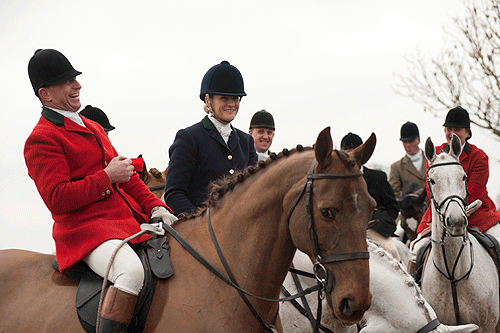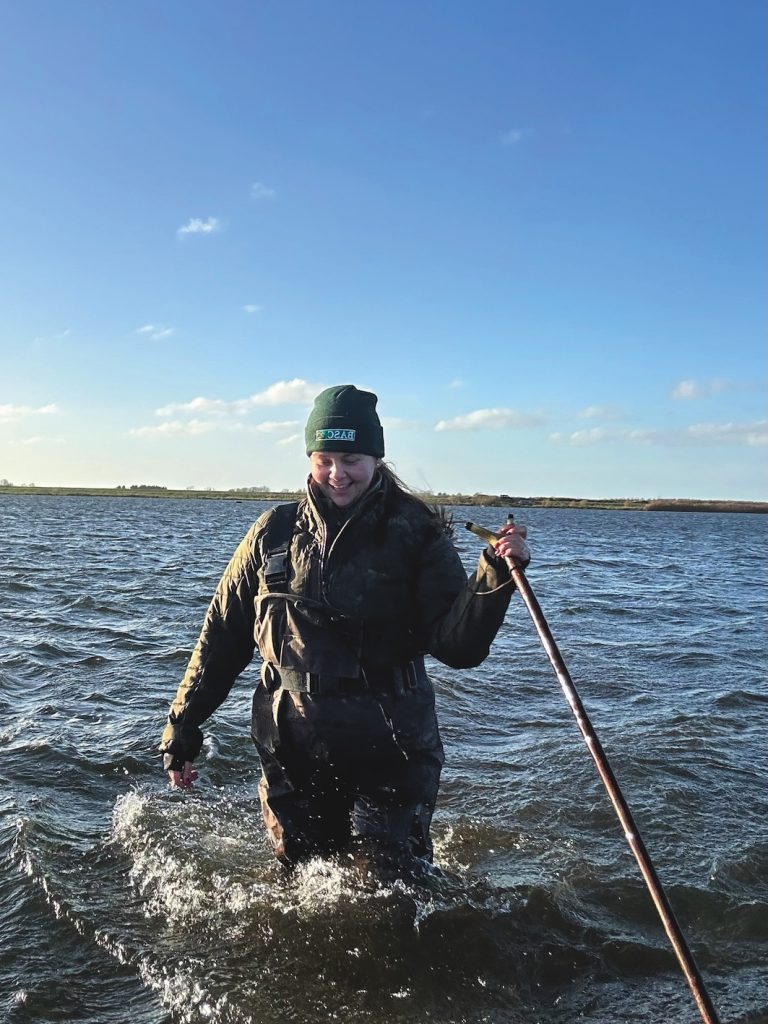Win CENS ProFlex DX5 earplugs worth £1,149 – enter here
Foxhunting: In the footsteps of Surtees
<strong>Joining a farmers' hunt in Nottinghamshire</strong>

This year marks 170 years since the publication of Handley Cross, arguably the most famous work by the Victorian comic writer Robert Smith Surtees. The landscape — both geographically and politically — may have changed beyond recognition since the main character John Jorrocks’ heyday, but the enthusiasm for watching hounds burns as brightly with today’s hunt followers as ever it did when that crafty cockney rode forth.
In March I had the pleasure to join the Grove & Rufford Hunt on the final day of its season, a convivial meet on a farm in Nottinghamshire. The rain and snow clouds, so regular this winter, had parted to reveal clear skies and sunshine, though a thin north-easterly wind kept us honest.
Local records for hunting go back as far as the 17th century. However, it was not until 1952 that the Grove & Rufford combined to form the current country.
Hunting within the law
While some of the grander hunts attract publicity, the Grove & Rufford is happy to fly below the radar. Joint master Jane Strawson MFH addressed the field before the off, underlining the debt of gratitude they all owed to the farmers, keepers and landowners who allow the hunt to pass through their land, particularly during such a wet season.
“Good morning, everybody,” she said as yet another round of pies and cakes were offered by the hosts, Chris and Suzanne Germany. “The lines have been laid and we will be hunting within the law. The going will be wet, so I would ask that all of the field sticks together. Please don’t go out on point unless asked to.”
Joining the hunt followers on such a bitterly cold day provided me with a guilty pleasure. As the blue-lipped riders trotted forth, their hands clawed to the reins, our mobile grandstand piled into heated cabs filled with flasks that warmed the core.
In the cab with me was joint master John Michael MFH. He would rather have been mounted, but a calving complication with one of his pedigree Simmentals had prevented him. He explained that the hunt committee’s agricultural background helped maintain momentum in the years following the 2004 Hunting Act. “We’re fortunate that our masters are farming people,” he said. “The upkeep of relationships with the landowners, farmers and gamekeepers is the most important part of my job.”
Jorrocks wasn’t always so sympathetic to farmers but, happily, times have changed since his day. John underlined that the hunt still provides a service for local landowners. “Our terrier men are always on hand to help with any fox problem,” he explained. “We’ve had to stop the fallen stock collection, as the cost of disposing of waste is so high after BSE. But the hunt also plays an important social role. A lot of the farmers still want to see us riding across their land and jumping their hedges. I know one who gets grumpy if we don’t take on his six-foot hedge — I suspect he likes to see us all fall off!”
Rosy-cheeked riders
We followed the field as it passed the distinctive red-brick farmhouses that punctuate this area of Nottinghamshire. We could hear the clip-clop of shod hooves before the first hounds and red coats appeared above the skyline, led by huntsman Paul Larby. As we waited, a robin bustled from one leafless twig to another. The cold winter had done little to cramp its style — its flash was as vivid as the riders’ cheeks as they thundered by.
The line had been laid that morning by dedicated follower and joint secretary June White, by dragging an oil-soaked rag from the back of a quad bike. Her family takes an active role in the hunt, whether hosting the day or helping to turn hounds if they stray too close to a main road or village. “You could say we are more hound than horse,” she said. “Every year, we walk four puppies, teaching them to recognise their names and to walk on a lead.”
This year, the family has Warlock, Wagtail, Wagstaff and Walnut, which were leaning longingly on the wire of their enclosure as the pack crossed a nearby field. Their time will come soon enough.
“The ones we’ve walked before will remember you and come up for a cuddle on a hunt day,” said June’s daughter Tessa, who is training to be an agronomist.
“I love watching them grow up. At first, they will wander off or be left behind, but they quickly catch on.”
Her sister Zoe added: “We haven’t walked a show winner yet, but hopefully we will this year. Paul has made such a difference with the standard of hounds, and last year the hunt had a champion bitch at the Peterborough Hound Show. A result like that lifts everybody.”
The hounds’ diet of flesh is augmented with pork and beef pies from Melton Mowbray, making short work of the rejects deemed unfit for human consumption. “The pies smell wonderful,” said June ruefully. “Especially at Christmas time with their cranberry sauce. Some of them have just the smallest imperfections, but at least they don’t go to waste.”
The pack had moved on, following the line, and soon we heard the echo of hounds speaking in a wood. A Jack Russell strained at its leash, desperate to show the bigger dogs how it should be done. Would it have been quite so confident if the leash were removed, I wondered?
Hunt stalwart
A reliable source of useful hunt information in these parts is Martin Horrocks, a stalwart of the hunt at 85 years old. Jorrocks’ claim to be “a sportsman all over, and to the backbone” is apt for Martin too, who remains as keen to watch the hounds as when he was a boy. When he was at Radley College, aged 17, just after the end of World War II, he escorted four-and-a-half couple beagles from Oxford to Retford in the guard’s van, changing trains twice (try doing that nowadays!). Yet it was only at the age of 45, having retired from rugby, that Martin took up riding.
“I wanted to get closer to the action,” he said. “It was always the foxes I wanted to see. Such wild and beautiful animals. I remember once trying to turn a fox in a stand of willow. I was stood on the bank and the fox ran clean through my legs. I can see it like it happened yesterday.”
Martin is an avid collector of books and prints, in particular those of Surtees. “I’d far rather read tales of Jorrocks or Soapey Sponge than any of Charles Dickens’ characters,” he said.
This year is also the 160th anniversary of Surtees’ other seminal work, Mr Sponge’s Sporting Tour. During one of his shameless ruses, Soapey observes that “it is best to let the horse go his way, and pretend it is yours; there is no secret so close as that between a rider and his horse”.
It’s an insight that resonates with Martin. “I was never very good at jumping,” he confided. “Thankfully, like old Jorrocks, I had an eye for a gap.”
Season’s end
Once the last wood had been drawn, the followers and hunt staff congregated for
tea, scones and pork pies — and some fine damson gin — in June’s cosy kitchen to reflection another pleasant season. Enjoying a slice of coffee cake, Martin recalled his favourite book growing up: Wild Lone by BB. “I would read it every school term and twice in the holidays,” he said. “His imagery has never left me.”
Towards the end of that book, BB evokes the passing of the season with trademark optimism: “The March wind was playing a merry jest with the winter-weary world. Begone all signs of autumn’s sadness and fallen leaves! Now for a real spring clean of copse and meadow, street and town.”
But the last word should perhaps go to Jorrocks, for whom the arrival of spring was cause for gloomy reflection. “’Unting is all that’s worth living for,” he famously proclaimed in Handley Cross. “All time is lost wot is not spent in ’unting. It is like the hair we breathe — if we have it not, we die.”
Related Articles
Get the latest news delivered direct to your door
Subscribe to Shooting Times & Country
Discover the ultimate companion for field sports enthusiasts with Shooting Times & Country Magazine, the UK’s leading weekly publication that has been at the forefront of shooting culture since 1882. Subscribers gain access to expert tips, comprehensive gear reviews, seasonal advice and a vibrant community of like-minded shooters.
Save on shop price when you subscribe with weekly issues featuring in-depth articles on gundog training, exclusive member offers and access to the digital back issue library. A Shooting Times & Country subscription is more than a magazine, don’t just read about the countryside; immerse yourself in its most authoritative and engaging publication.







